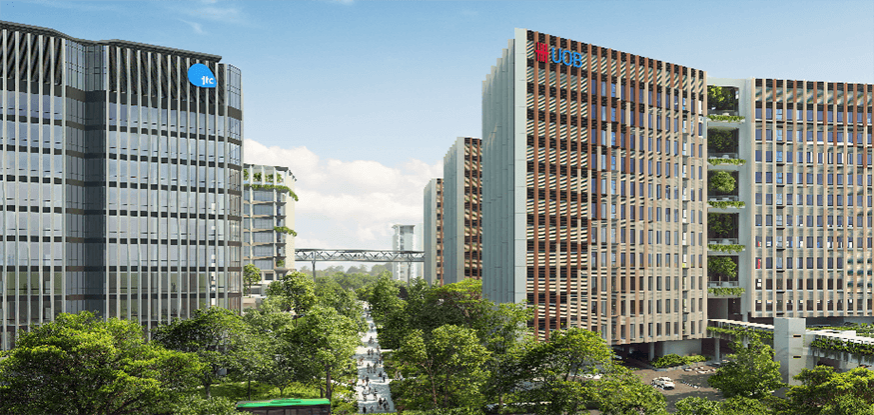By 2026, Singapore plans to launch its first smart district, Punggol Digital District (PDD), advancing its smart city initiative and accelerating urban development.
Set to be Singapore’s equivalent to Silicon Valley, PDD is designed to consist of major technology firms and bank technology divisions, including Oversea-Chinese Banking Corporation Limited (OCBC) and United Overseas Bank Limited (UOB).
Strategically connected to the newly opened Punggol Coast MRT station, the smart district will feature an innovative Open Digital Platform (ODP), jointly developed by JTC Corporation and GovTech. The ODP will serve as a centralized operating system that enables plug-and-play compatibility for various technologies, allowing seamless communication.
Navigating the ODP
Enhanced by a sophisticated digital twin, the ODP will provide real-time monitoring and control of conditions across the business park, all managed from a centralized command post. Relying on the ODP to simplify building management and optimize operations, JTC Corporation will oversee 10 towers spanning across an area equivalent to 70 football fields.
James Tan, Director of JTC’s Smart District division, describes the ODP as a smart city operating system, comparable to a mobile operating system that seamlessly analyzes energy use among tenants, monitors foot traffic, and coordinates robot deployment throughout the district.
The ODP’s capabilities will feature interactions between autonomous robots in the district such as food delivery and cleaning robots, “Bob and “Bill.” Tenants deploying robots can also adopt the ODP’s communications standard through an application programming interface, allowing robots to move based on granted permissions. These robotic activities will be centrally monitored and managed through a single command post, improving efficiency and responsiveness.
Moreover, the ODP will grant technology tenants access to virtual 3D replicas of the district with real-time data, allowing companies to test their projects in a virtual environment before deployment. The district’s comprehensive monitoring system will include 20,000 sensors strategically positioned across the area to track movements, temperature, and energy consumption. Additionally, these sensors will oversee a centralized waste management system through a 4-kilometer underground conveyance network.
Advancing Sustainability, Prioritizing Cybersecurity
The ODP can significantly reduce electrical consumption and enhance user experience by recommending lift schedules based on real-time data. Artificial intelligence (AI) will be integrated into the district’s smart cooling system to control air-conditioning settings and electrical grid to regulate energy use.
Nelson Liew, Group Director of New Estates at JTC, emphasized that over 1,000 solar panels will generate nearly 5% of the estate’s energy needs. The PDD will also feature over 90 electric vehicle (EV) charging spots—one of the highest concentrations in Singapore.
As the district nears completion, early tenants like the Singapore Institute of Technology (SIT) have started to relocate. Meanwhile, robotics firm, dConstruct, is scheduled to relocate in September 2025. Chinn Lim, dConstruct’s CEO, highlighted that the ODP will enable comprehensive testing of various robots, including humanoid concierge and delivery- and surveillance-focused robots.
Lim added, “There is nowhere else in Singapore that has this kind of technology at a district scale.”
Meanwhile, James Tan emphasized the significance of cybersecurity to prevent software issues from affecting the physical world. “AI should be able to improve our operations, and not cause threats to safety or privacy,” he said.
Restrictions will be applied to the ODP, limiting its access to adjusting controls such as lighting and room temperature settings.

